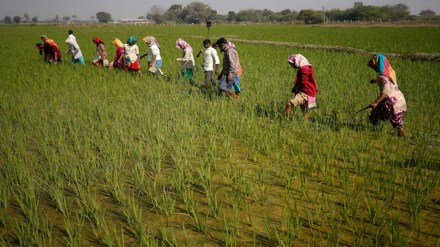The sowing of kharif crops – paddy, pulses, oilseeds, sugarcane and cotton — has been completed in over 99.5 million hectare (mha) or 91% of the “normal sown area” of 109.6 mha. Overall area under these crops so far has been up 4% on year, with higher areas covered under paddy and pulses, reports Sandip Das.
A Strong Start for Major Food Crops
With the exception of cotton and oilseeds where area under soybean and sunflower have declined by 3.8% and 10.2% respectively on year, sowing of paddy, pulses, coarse cereals and sugarcane have been higher on year.
crops to plant ahead
The farmers will continue with planting of crops till the first week of September while monsoon rains so far have been just above the benchmark long period average.
Kharif crops in India are those sown with the onset of the southwest monsoon, typically between June and July, and harvested in the autumn months from September to October. These crops thrive in warm, wet conditions and depend heavily on timely and sufficient rainfall. Major Kharif crops include rice, maize, millet, cotton, sugarcane, pulses, and oilseeds. They play a crucial role in India’s food security and rural economy, as millions of farmers rely on them for their livelihood. The productivity of Kharif crops often fluctuates with the intensity and distribution of monsoon rains, making them sensitive to climate variations.
The cultivation of Kharif crops varies across regions in India, depending on local climate, soil type, and water availability. States like Punjab, Haryana, Uttar Pradesh, and West Bengal are known for extensive rice production, while Maharashtra, Karnataka, and Gujarat grow large quantities of cotton and pulses. However, challenges like unpredictable monsoons, pest attacks, and inadequate storage infrastructure continue to impact farmers’ incomes and crop stability.
